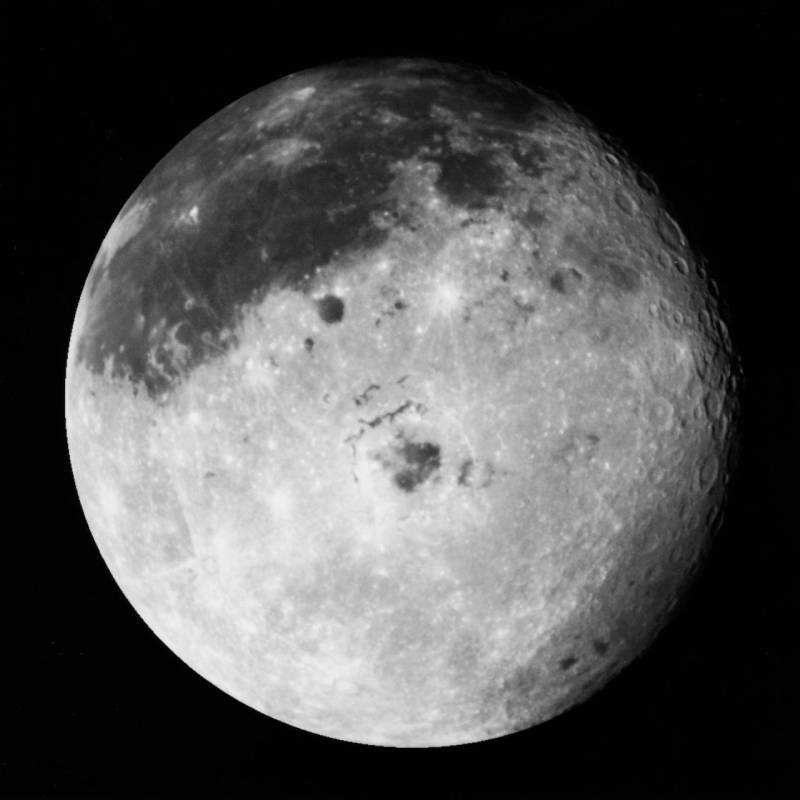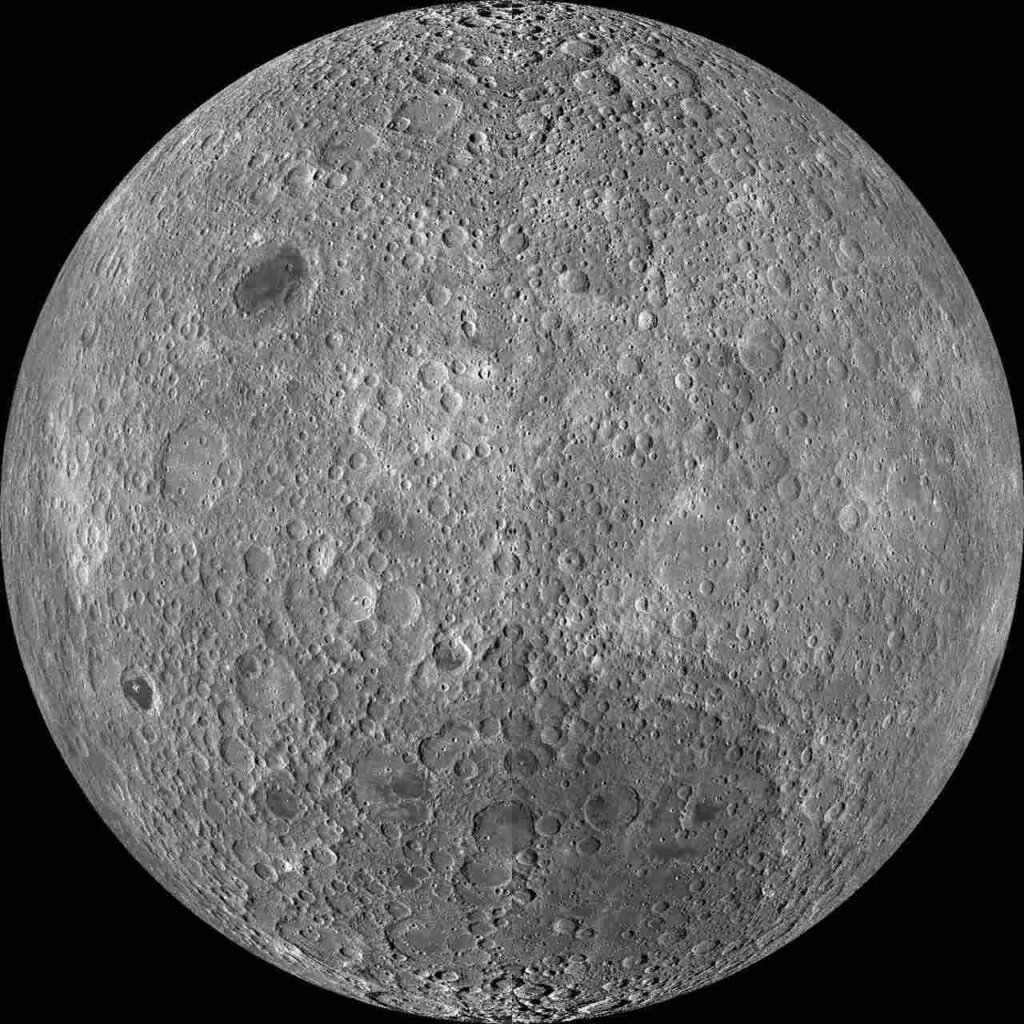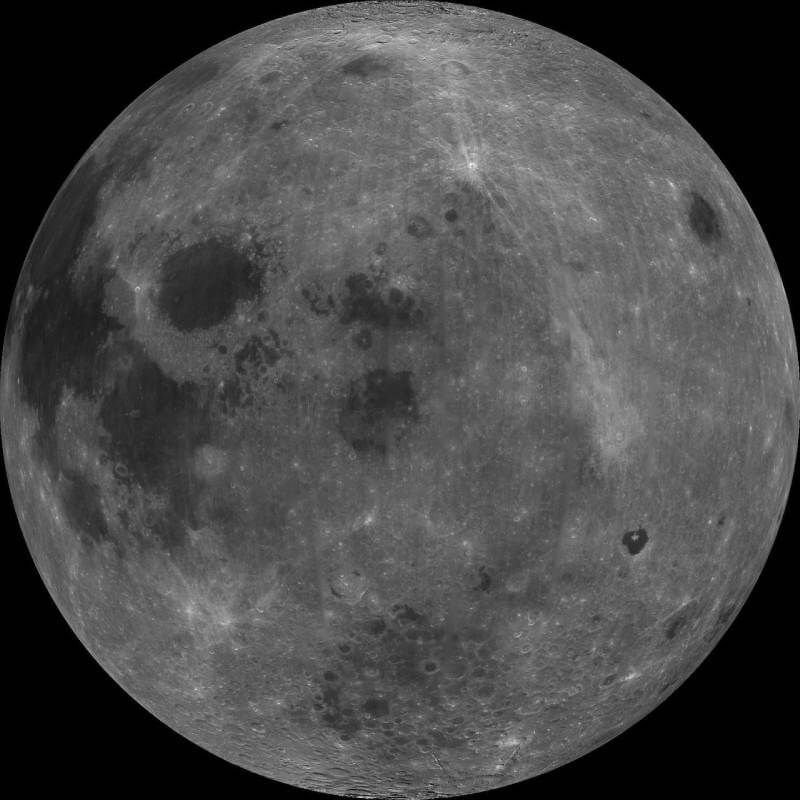While we often think of the Moon as having rugged mountains, deep craters, and vast plains, Lunar Maria is one of its most intriguing characteristics. These large, dark, and relatively flat areas on the surface of the Moon have been up for research for years. That familiar face everyone recognizes is created by features referred to as lunar maria – the dark patches on the Moon.
The molten rock that filled the crater of the Moon was rich in titanium, magnesium, and iron. Because of the iron abundance, lunar maria reflects only half the light compared to the surrounding region, which is lighter. Therefore, the reflectivity reduction means less light is bounced back into our eyes from the areas compared to nearby brighter uplands, which is why lunar Maria appears darker when observed.
The word comes from Latin – “mare” means “sea.” Maria is the plural of the sea, pronounced as “mah-ree-uh.” Interestingly, early observers believed that these dark plains were actual seas, but now you know they are made up of dark grey rock created from ancient volcanic eruptions. Lunar Maria covers about 16% of the surface of the Moon, with most of it located on the Moon’s side that faces the Earth.
How Was Lunar Mare Formed?
As the Moon cooled down following its formation around 4.1 billion years ago, a transformation occurred on the surface of the Moon. Back then, a thin outer layer was beginning to solidify over a seething molten magma reservoir hidden below. This molten material found its way to the surface of the Moon through fissures and cracks, giving forth volcanic eruptions. The fiery magma spewed and flowed across the Moon’s landscape, gradually cooling and solidifying to form the flat, dark plains, now known as lunar maria.

The volcanic activity that breeds lunar maria was not just a single event but happened repeatedly over an extended period. Each eruption had another layer to these dark plains, contributing to their complexity and vastness. It’s important to know that the formation of lunar maria resulted from volcanic activity and other factors, like gravitational interaction between Earth and Moon, which may have contributed to the distribution and development.
Can We Find Lunar Maria On The Far Side of The Moon?
In 1959, after the initial Soviet exploration on the Moon’s far side, scientists observed fewer lunar Maria – especially on the side facing away from the Moon, as mentioned earlier. Despite the maria distribution contrast, both sides have a similar abundance of impact craters. To understand the disparity, they had to go deeper and have further analysis to know the reason for the discrepancies in lunar maria coverage on the dark side of the Moon.

Today, we understand that the Moon’s far side has a crust approximately twice as thick as the one on the side that always presents itself to us. The idea is that this difference in the thickness of the crust arises from the rapid cooling during the Moon’s formation. During the formation of the Moon and Erath, there were molten masses.
But, due to its smaller size, the Moon managed to cool down that Earth swiftly. As it cooled, the molten Earth emitted heat toward the moon side facing it, thus maintaining a relatively higher temperature on that side. Additionally, the dark side of the Moon cooled faster, thus attracting more material, which formed a thicker crust. This, in turn, acted as a protective shield that made it harder for impacts to breach and exhibit lava into the craters on the far side of the Moon.
Examples of Lunar Maria
Most of the natural things are named after a particular convention. And it’s no different for Lunar Maria. They are named after their features like states of mind, sea attributes, and sea features.
Here are a few of them:
1. States of Mind
- Mare Ingenii (Sea of Cleverness)
- Mare Crisium – Sea of Crises located on the Moon’s near side and is known for its distinctive circular shape.
- Mare Moscoviense (Sea of Moscow).
- Mare Tranquillitatis – Sea of tranquility which is among the famous lunar maria since it was the landing site for NASA’s Apollo mission in 1968 and is located on the Moon’s near side.
- Mare Serenitatis – Sea of Serenity – has been the landing site for different robotic missions and is also on the near side of the Moon.
2. Sea Attributes
- Mare Orientale – Eastern Sea
- Mare Marginis – Sea of the Edge
- Mare Australe – Southern Sea
- Mare Cognitum – Sea of Knowledge
3. Sea Features
- Mare under – The Sea of Waves
- Mare Homorum – Sea of Moisture
- Mare Anguis –Serpent Sea
- Oceanus Procellarum – Ocean of Storms
- Mare Spumans – Foaming sea
- Mare Nubium – (Sea of clouds) – Found in the southern hemisphere of the Moon, known for its cloud
- Mare Fecunditatis – (Sea of fertility) found on the near side of the Moon
- Mare Vaporum – Sea of Vapors
- Mare Nectaris – Sea of Nectar – found in the southern hemisphere
- Mare Frigoris – Sea of Cold
- Mare Insularum – Sea of Islands
- Mare Imbrium – Sea of rains which is located in the Moon’s northern hemisphere and among the largest lunar maria
To Wrap Up
You now understand better than Lunar Maria were just seas. From their formation through ancient volcanic activity to their influence on the exploration of the Moon. Like Mare Tranquillitatis set a landing site for the first humans to set foot on the Moon – quite impressive!

